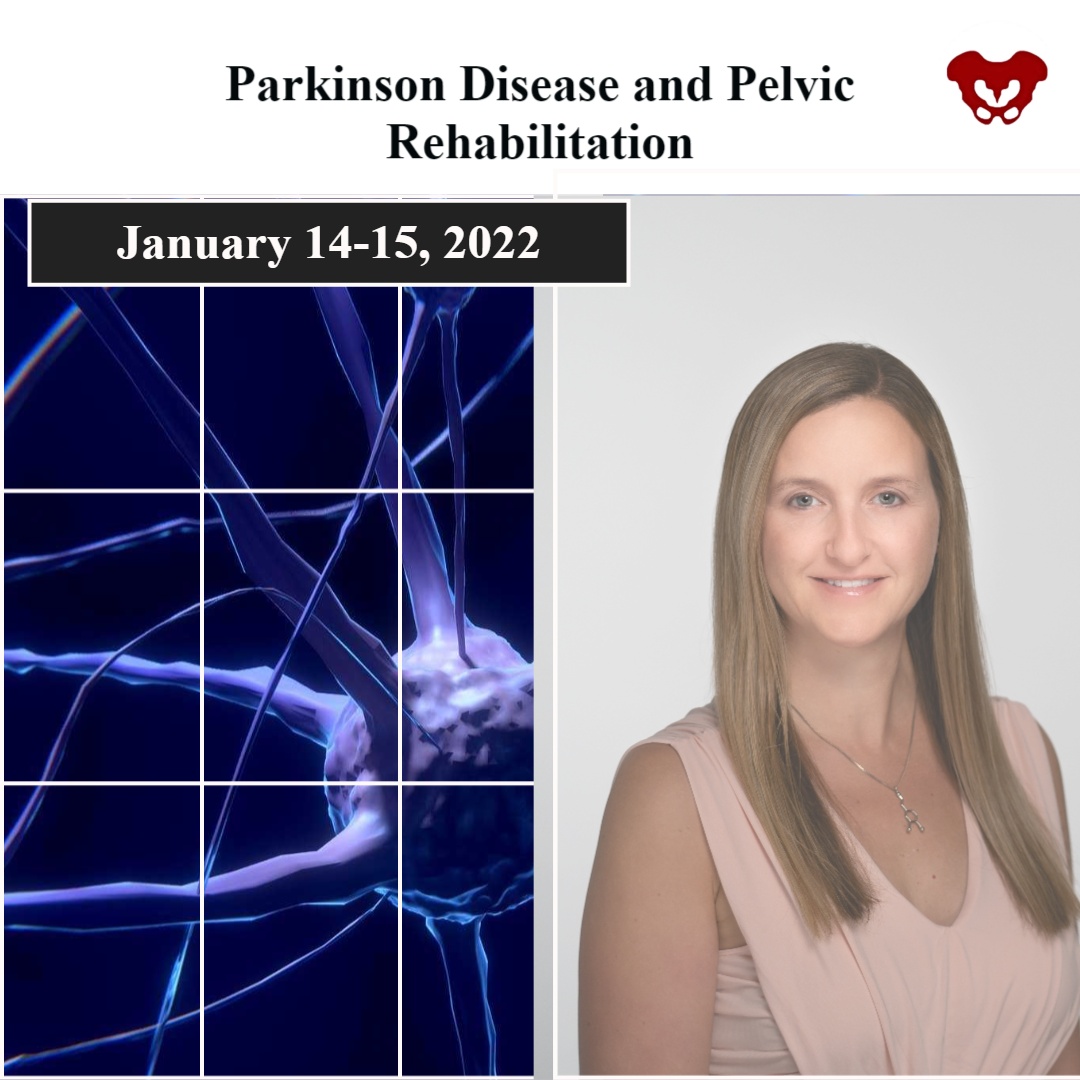Pelvic Floor Dysfunction and Parkinson Disease

Erika Vitek is kicking off the new year with her remote course Parkinson Disease and Pelvic Rehabilitationscheduled for January 14-15, 2022. In this course, she explains that akinesia is a term to describe the movement dysfunction observed in people with Parkinson Disease (PD). Akinesia is defined as poverty of movement, impairment or loss of the power to move, and slowness in movement initiation. This is observable in the loss of facial expression, associated nonverbal communicative movements, arm swing with gait, and overall small amplitude movements throughout all skeletal muscles in the body.
The cause of this characteristic profile of movement is due to loss of dopamine production in the brain, which causes a lack of cortical stimulation for movement(1). If the loss of dopamine production in the brain causes this poverty of movement in all skeletal muscles of the body, how does the pelvic floor function in people with PD, and what should the pelvic floor rehabilitation professional know about treating the pelvic floor in this population of patients?
Common pelvic floor dysfunctions often involve functions controlled through reflexes and voluntary actions such as bladder, bowel, and sexual functions. PD-related pelvic floor dysfunctions impact the non-motor portion of the bladder, bowel, and sexual functions. A recent study by Gupta et al. showed that “urinary dysfunction and constipation, manifestations of pelvic floor dysfunction are common sources of disability and impaired quality of life in women with PD(2).” This study concluded that pelvic floor dysfunction is underreported and undertreated in people with Parkinson's Disease.
As there is no cure for PD, the goal for all treatment strategies is to slow the disease progression and achieve neuroprotection while improving quality of life. There are five common strategies in treating this patient demographic: rehabilitation, therapy, restoration, maintenance, and surgery, as found by Frank Church. Rehabilitate follows the diagnosis and treatments and includes physical, occupational, and speech therapy. Therapy refers to the use of levodopa or other dopamine agonists to preserve dopamine. The restorative strategy includes aerobic exercise programs. Maintenance strategy uses complementary and alternative medicine to support and protect the brain microenvironment, while surgery includes deep brain stimulation(3).
Patients with PD can benefit from physical and occupational therapy as part of their rehabilitative management strategy. A trained practitioner can work with the patient to introduce neuromuscular re-education training. In this type of training, reflexive actions are optimized by promoting repetitive firing of the neurons in the circuits to allow the body to adapt to the most efficient path. Practitioners can also introduce strength training for those muscles under voluntary control to reduce muscle strain and improve contract-relax properties. Exercise-based interventions have been shown to promote improvements and allow a better quality of life in pelvic floor function of Parkinson's patients.
As part of the Parkinson Disease and Pelvic Rehabilitation course curriculum, Erica Vitek delves into the characteristic pelvic health dysfunctions that people with PD face. Options for assessment and treatment planning are also provided, including applications for TENS in the neurologic population. Erica shares “There is no pathological evidence that in Parkinson Disease there is any break in the continuity of the motor system. The neurologic pathways are all intact and the ability to produce muscle power is retained. However, a strong base of clinical knowledge of the disease is required to help these patients activate these intact motor pathways.”
References:
- Caligiore D, et al. Different Dopaminergic Dysfunctions Underlying Parkinsonian Akinesia and Tremor. Front. Neurosci., 29 May 2019 | https://doi.org/10.3389/fnins.2019.00550
- Gupta, Ankita et al. Pelvic Floor Health in Women with Parkinson’s Disease. Journal of Parkinson's Disease 1 Jan. 2021: 857 – 864. DOI: 10.3233/JPD-202491 | https://content.iospress.com/articles/journal-of-parkinsons-disease/jpd202491
- Church FC. Treatment Options for Motor and Non-Motor Symptoms of Parkinson’s Disease. Biomolecules. 2021; 11(4):612 | https://doi.org/10.3390/biom11040612
By accepting you will be accessing a service provided by a third-party external to https://www.hermanwallace.com/





































